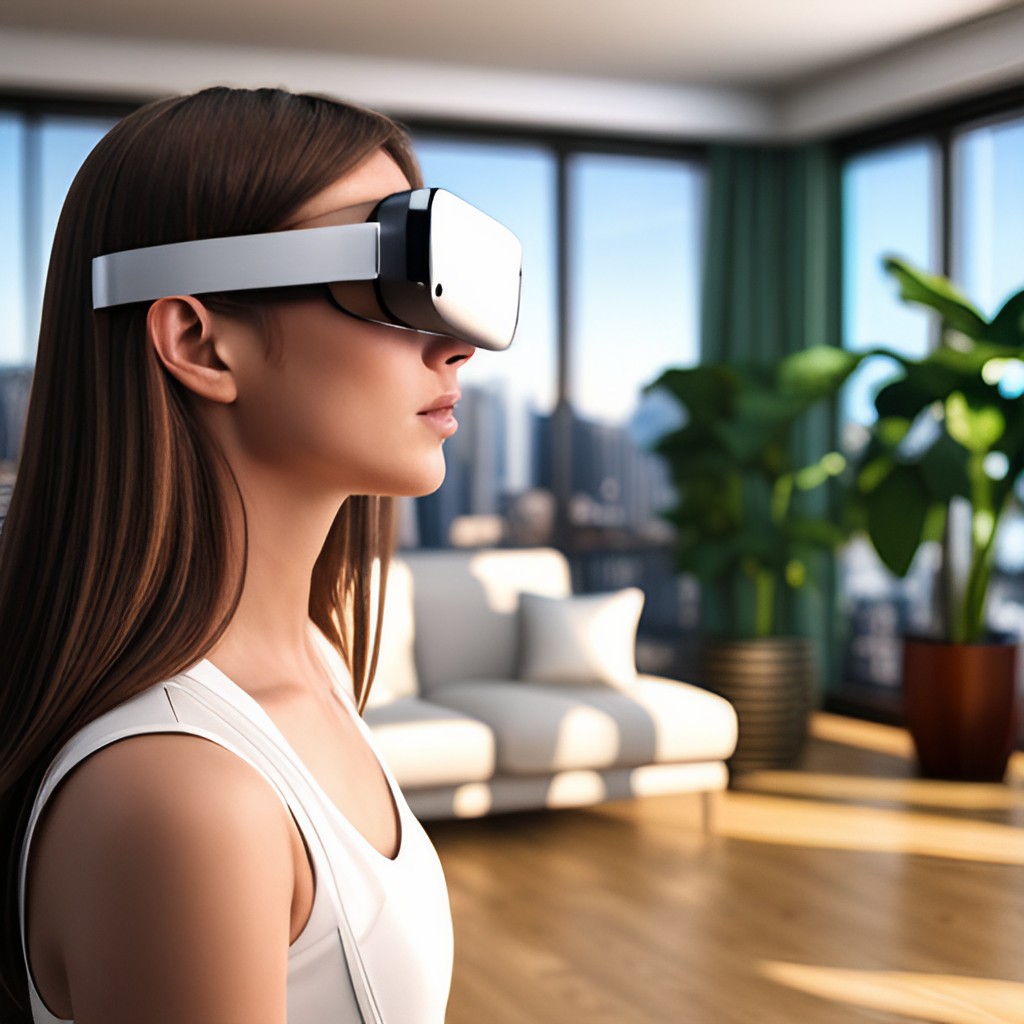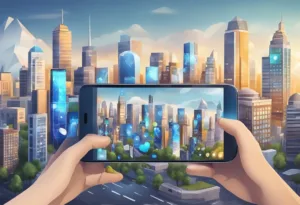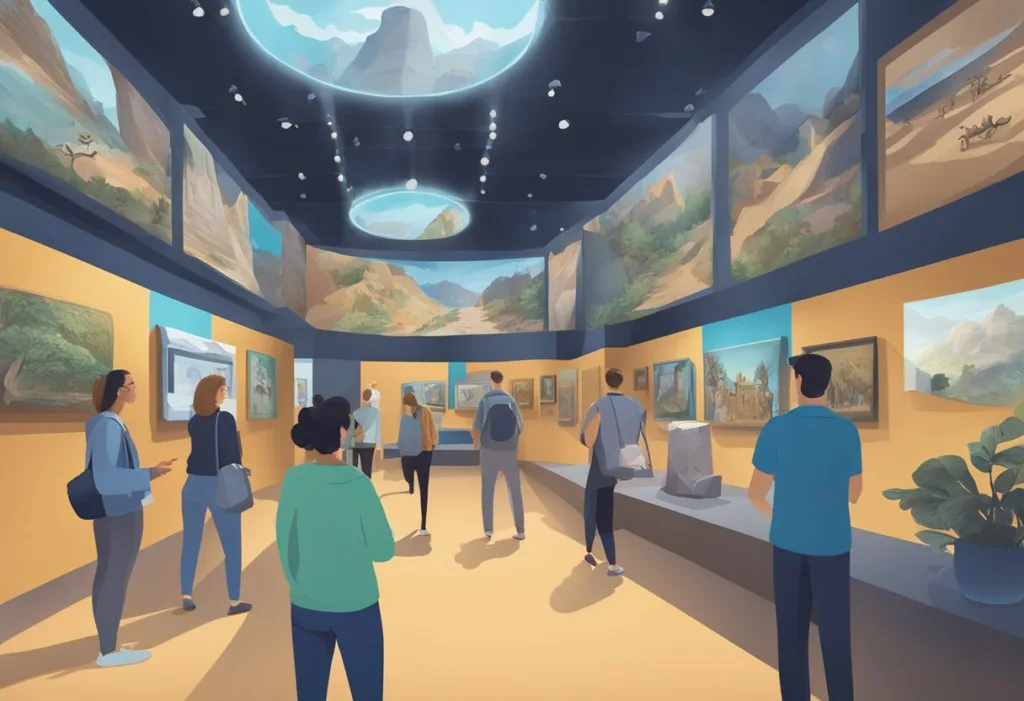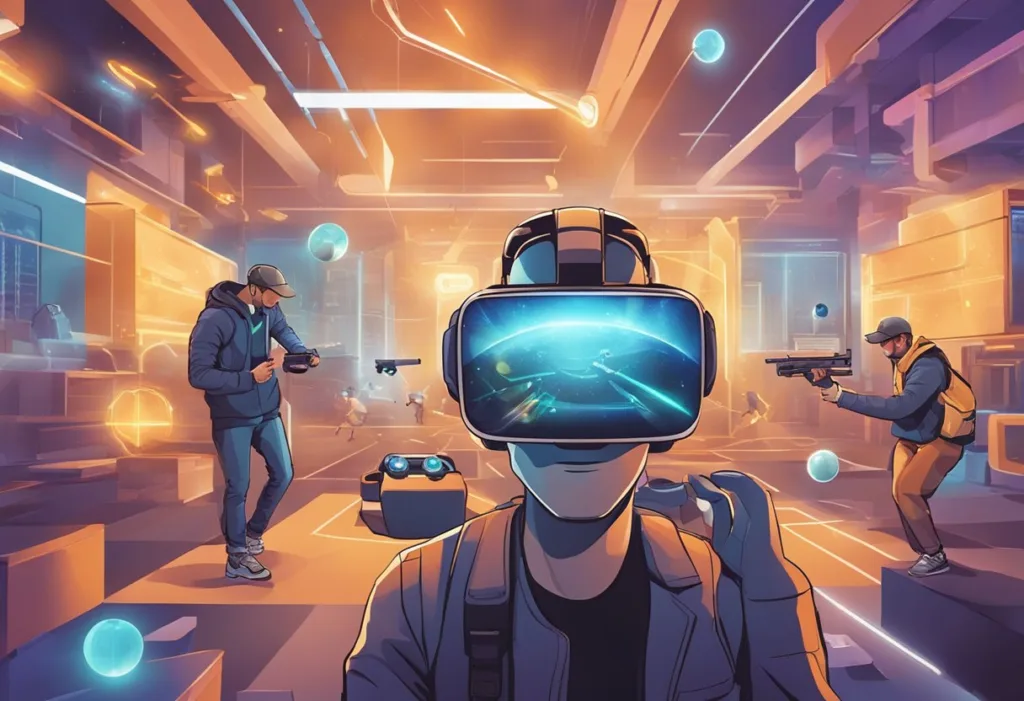Augmented reality (AR) is revolutionizing the way we interact with virtual worlds. AR can superimpose digital content onto our physical environment, giving us a new way to explore and experience metaverses. With its ability to blend virtual and real elements, augmented reality has the potential to drastically change how people interact and engage with virtual environments. In this article, we’ll take a look at how to enhance your Metaverse experience with AR to enjoy the world of endless possibilities.
Key Takeaways:
- Download an AR-enabled app to get started with augmented reality in your metaverse experience.
- Identify landmarks and place virtual objects accurately using the app’s mapping features.
- Add audio effects, lighting, animations, and social features to enhance the experience even further.
- Customize content with the app’s editing tools and test the experience before deploying.
- Iterate your augmented reality experience to make it even better over time.
How to Enhance Your Metaverse Experience with Augmented Reality
Download an AR-enabled app
Before you can start using augmented reality, you’ll need to download a compatible mobile app that supports the technology.
Choose your content
Once you have the app installed, you’ll be able to choose what type of virtual content you want to overlay on top of the physical world.
Identify landmarks
To ensure accuracy, it’s important to identify landmarks in your environment that will act as anchors for your virtual objects and content.
Place virtual objects
Using the app, place digital objects within the physical environment using coordinates and measurements gathered from landmark identification and mapping features.
Add audio effects
Use audio effects to further enhance your augmented reality experience and make it feel more immersive.
Add lighting
To make your virtual objects appear more realistic, add lighting effects from the app’s settings or create them manually.
Include animations
Animations can also be added to bring virtual content to life within the physical environment.
Integrate social features
AR experiences are even better when shared with others, so look for ways to integrate social features into your metaverse experience.
Customize content
Use the app’s editing tools to customize the 3D models and other visuals you want to include in your augmented reality experience or purchase items from virtual stores.
Test and iterate
Once everything is set up, test your augmented reality experience and make adjustments as needed.
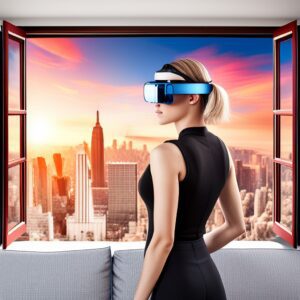
What is Augmented Reality and How Does it Work
Augmented reality (AR) is a technology that superimposes physical and digital worlds, giving us an additional layer of sensory information.
AR works by combining the real world with virtual objects, creating an interactive experience that allows users to interact with virtual and augmented reality digital elements in their environment.
The technology can recognize physical features in the environment and “anchor” virtual content onto those points, giving users fully immersive experiences of augmented and virtual reality.
Using augmented reality, you can explore metaverse virtual spaces from a different perspective and engage with them in new ways.
You can use AR VR to add layers of detail to your gaming experience, allowing you to get up close and personal with characters and settings that would otherwise remain unseen.
Augmented reality can provide social opportunities within a metaverse, allowing users to collaborate and connect in new ways such as attending virtual events.
Difference between Augmented Reality and Virtual Reality
User Environment
Augmented reality adds content to the existing physical world, while virtual reality replaces the real world with a digital one.
Devices
AR is typically experienced through devices such as smartphones and tablets, while VR requires dedicated headsets such as Oculus Rift or HTC Vive.
Interaction
AR enables users to interact with digital content naturally by touching or gesturing for example, while interactions in VR tend to be more limited since they are confined within the digital environment.
Applications
Augmented reality is mainly used for entertainment purposes, while virtual reality offers more practical applications such as training and simulation.
Immersion
Both AR and VR can enhance the feeling of immersion in virtual worlds, but AR does so by blending virtual and real elements.
Movement
Augmented reality is generally better suited for stationary activities while Virtual realities can be used with more dynamic movements.
Cost
VR headsets tend to be more expensive than AR-enabled devices such as smartphones or tablets.
Flexibility
AR provides a great deal of flexibility since it allows users to switch between physical and digital environments without much difficulty, while VR tends to limit them within the digital world.
Content
AR can be used to overlay existing content on top of the physical world, while VR requires developers to create content from scratch that fits within the digital environment.
AR benefits in the Metaverse.
Increased Immersion
By blending virtual and physical elements, augmented reality can provide a more immersive experience within metaverses.
Enhanced Interactivity
AR allows users to interact with digital objects in ways that are not possible in the real world, giving them a more engaging experience and computer vision.
More Accurate Representation
With AR, users can get a more accurate representation of objects in the virtual world by having them displayed within their physical environment.
Improved Navigation
Augmented reality can provide helpful cues and landmarks to help users navigate through metaverses with ease.
Enhanced Visuals
AR can be used to overlay visuals on top of the physical world, providing users with an enhanced experience when exploring virtual worlds.
More Engaging Learning
AR can make learning about new topics or mastering skills much more engaging by blending digital elements with real-world applications.
Increased Social Connections
With augmented reality, you can connect with other players in the metaverse and collaborate on projects together.
Reduced Costs
AR requires less computing power and hardware than virtual reality, making it an affordable way to experience metaverses.
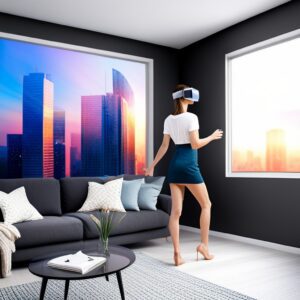
How is augmented reality used in the metaverse?
AR technology is used in the metaverse to enhance user experiences and allow users to interact with and explore virtual worlds in a more immersive way.
AR can be used to blend digital content with the physical world, allowing users to explore metaverses from a different perspective.
Users can also use AR to access virtual events, collaborate on projects, or even attend classes within a metaverse.
AR can provide helpful cues and landmarks to help users navigate through virtual worlds, as well as enhanced visuals to make the experience more engaging when they attend virtual events.
How do I make my metaverse better?
To make the Metaverse better, both the real and virtual worlds should be connected and co-existing.
To improve the user experience, developers should focus on creating a seamless transition between the two worlds, with interactive elements and objects that can be manipulated in both virtual and physical spaces.
In addition, developers should focus on creating a better experience for users by optimizing the navigation process, providing helpful cues to guide them through the Metaverse, and customizing content to fit their individual preferences.
Developers can also use augmented reality technology to overlay visuals on top of the physical world, making the Metaverse experience more engaging and realistic.
Is augmented reality a part of the metaverse?
Yes, augmented reality is a part of the metaverse. Augmented reality (AR) allows users to blend virtual and real elements to create immersive experiences within virtual worlds.
AR technology can be used to overlay 3D objects onto physical environments, providing helpful cues and landmarks as well as enhanced visuals that make the experience more engaging for users.
How are AR and VR connected to metaverse?
In the age of artificial intelligence and smart glasses, both Augmented Reality (AR) and Virtual Reality (VR) are connected to the Metaverse by allowing users to explore virtual worlds and experience new levels of immersion.
VR allows users to explore fully immersive digital environments, while AR overlays existing content on top of the physical world.
Both technologies give users access to enhanced visuals, interactivity, navigation cues, and more. They also enable social features, allowing users to collaborate on projects or attend events in the metaverse.
By combining both AR and VR with other technologies like AI and robotics, developers can create even more immersive experiences within virtual worlds, making the Metaverse an ever-evolving space for exploration and discovery.
Bottom Line
Augmented reality can be a great way to enhance your metaverse experience by blending virtual objects with the physical world.
With AR, users can interact with digital content intuitively and naturally, while also getting the advantage of increased immersion, enhanced visuals, improved navigation, and more engaging learning opportunities.
While setting up augmented reality may seem daunting at first, it’s relatively easy once you have the right tools in place. So start exploring this exciting technology today and see how it can add new possibilities to your metaverse experience.

